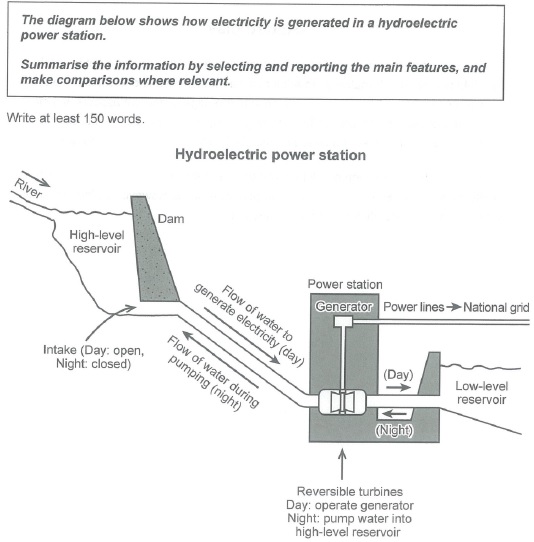Summarize information from the diagram
The diagram illustrates the process of electricity production by a hydroelectric power plant. Overall, the power station harnesses the energy of a river by utilizing the water flow from higher to lower grounds. The station works in two regimes, that allow it to utilize day and night times for electricity generation.
As the diagram reveals, the first facility is a dam, that blocks the river and creates a high-level reservoir upstream. During the day the dam opens its intake at the bottom and allows free flow of water towards a power station with an electricity generator. As the water passes the turbines of the generator, it spins them, thus producing energy that is diverted to national grid via power lines. The water ends its day cycle in a low-level reservoir.
The second operational mode of the plant uses the generator in reverse as a pump. This results in lifting the water from the downstream body of water upstream to the high-level reservoir through the same route as it came to the generator. In order to fill the dam again before the day cycle, the intakes at its bottom are closed at nights.

dam.jpg
